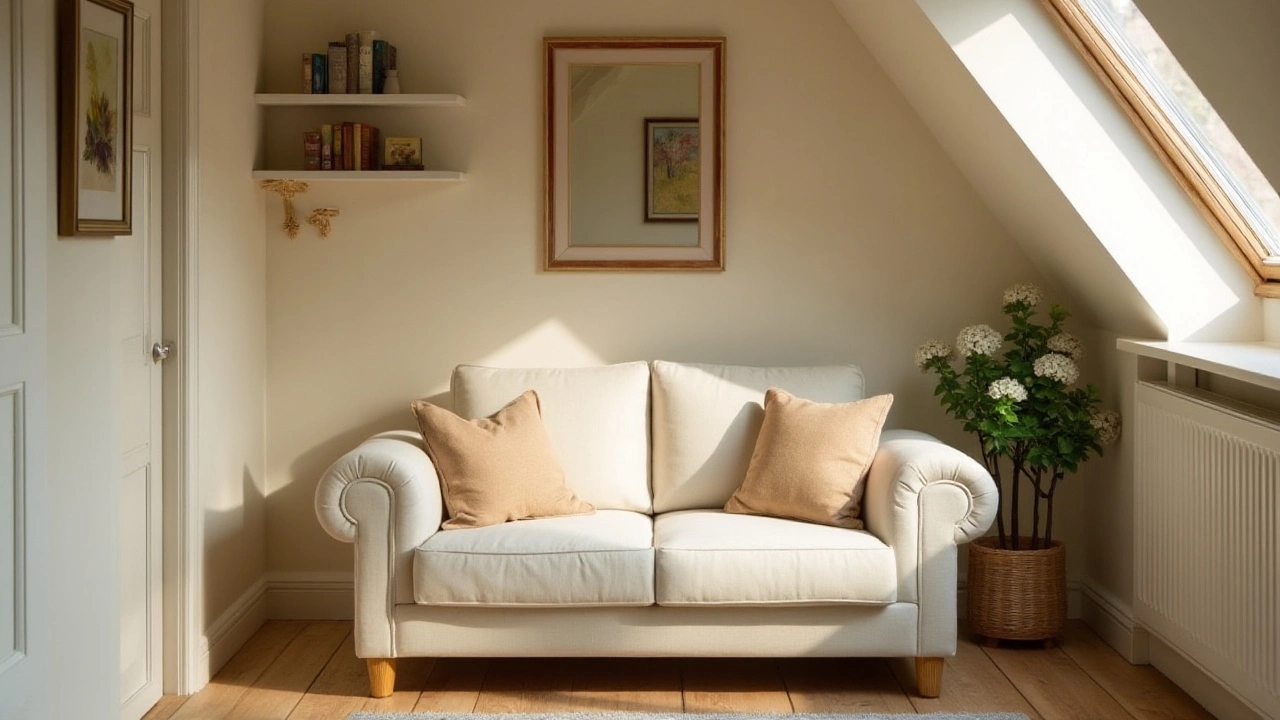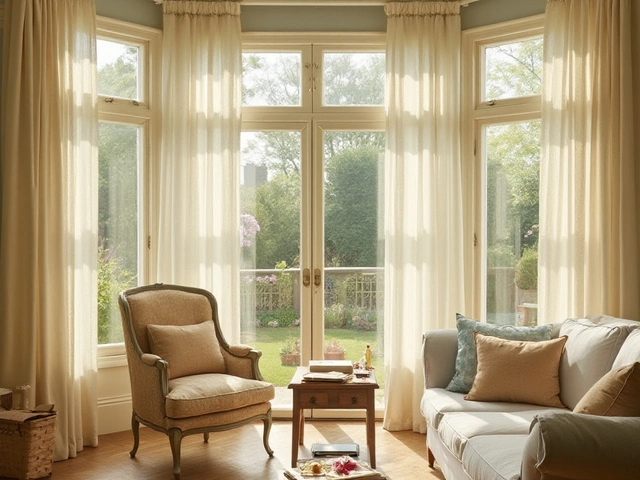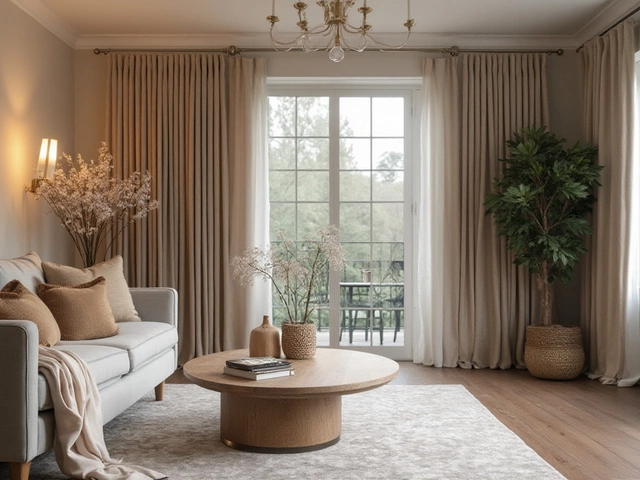Navigating the world of small space design can be a delightful challenge, especially when it comes to selecting the perfect sofa. A sofa doesn’t just serve as a seating option; it often stands as the centerpiece of your living room. The choice of color plays a crucial role, shaping the atmosphere and perceived size of the area.
When picking a sofa color for a small room, it’s essential to understand how different hues can influence the space’s visual dimensions. From bright whites to deep blues, each choice has its unique way of interacting with light and layout.
Join us as we delve into color theory basics, exploring how you can make the most of your compact living area, and ensuring your sofa not only fits but flatters your home’s cozy charm.
- Understanding Small Space Dynamics
- The Impact of Color on Perception
- Light and Neutral Tones
- Daring with Bold Colors
- Patterns and Textures
- Practical Tips for Color Maintenance
Understanding Small Space Dynamics
When you live in a small room, every design choice matters more than ever. Space is not just about the physical dimensions of a room, but also how you perceive it. Many people mistakenly associate a small living area with limitations, but it's all about the art of illusion and careful planning. The secret lies in understanding your room's dynamics and knowing how to manipulate them to your advantage. By making strategic choices, you can transform a tight space into a cozy haven.
One fundamental factor to consider is the flow of light. Natural light is your best friend. Make it a rule of thumb to keep windows as clear as possible to allow sunlight to flood the room. This enhances openness, making the space feel much larger than it is. You might opt for light, sheer curtains that add a touch of elegance while not obstructing the luminescent freedom. In the absence of natural light, artificial lighting should be layered effectively, using a combination of ambient, task, and accent lights to craft depth and dimension.
A small room's layout can dramatically affect its functionality. Furniture placement should encourage movement and accessibility. Arranging furniture along the walls rather than the center is one technique that maximizes available space. Many interior designers suggest that the choice of a central piece, like a sofa, should dictate the arrangement of other items, ensuring practicality and proportion. Interior design expert Nate Berkus once said,
"Your small living room is a reflection of you, and should balance comfort and style effortlessly."
Opting for multi-functional furniture can significantly aid in space-saving endeavors. A sofa bed or an ottoman that doubles as a storage unit offers versatility, proving invaluable in a confined setting. Additionally, incorporating vertical storage solutions like tall shelves or cupboards utilizes the often overlooked vertical space, drawing the eye upward and creating an illusion of height.
Color, too, plays an enormous role in this balancing act. Lighter colors can make walls recede, enlarging the perceived space. The color of your sofa should harmonize with the room’s color palette, making it feel cohesive rather than cluttered. For those wishing to add a pop of color, accent pillows or rugs offer that splash without overwhelming the senses, allowing personalization within controlled bounds.
Lastly, it’s vital to remember that clutter is the enemy of spaciousness. Regular decluttering and organized storage solutions keep the area not only tidy but visually expanded. Consider innovative storage solutions hidden behind curtains or decorative panels. By limiting possessions to those that you truly love or need, you maintain the essence of a minimalist lifestyle that often caters best to smaller environments.
The Impact of Color on Perception
Color has an incredible ability to transform a space, particularly in small room settings where every element counts. It's no secret that interior designers wield color like a magic wand, shaping the way people perceive dimensions and altering moods with just a few brushstrokes. In small spaces, this proves to be even more essential. The right color choice for your small room sofa can not only enhance the existing decor but also make your home feel more expansive and inviting. This is because colors play with our perceptions, bending the rules of visual weight and surface area right before our eyes.
Light colors are known to reflect more light than dark colors, and they often create the impression of space and airiness. This is particularly useful in a compact living room where space is limited; lighter hues can make walls appear further apart and ceilings higher than they actually are. Whites, soft grays, and beiges are popular choices owing to their ability to recede, as if they melt away, taking some of the furniture weight with them. Incorporating these colors in your choice makes the room brighter, leading to a more open-feeling environment.
Darker colors, on the other hand, can add depth and definition to a space. A deep navy or a rich charcoal might seem like bold choices for a small room sofa, but if paired with lighter accents and ample lighting, they can introduce a dramatic focal point without making the room feel cramped. The trick lies in balance—combining darker tones with lighter furnishings or walls to maintain the room’s airiness while adding that element of coziness and intrigue. It’s often said that dark and rich colors encourage closeness and intimacy, ideal elements for creating a snug atmosphere in a living space.
Patterns have their place too in small space design. While busy patterns can sometimes overwhelm, subtle motifs in a small room sofa can cleverly distract the eye from the room’s diminutive size, allowing the furniture to claim attention in a less direct way. This can be achieved with fabrics that have understated, repetitive patterns, lending texture without chaos. Stripes, particularly vertical ones, can create an illusion of height. However, it's wise to employ patterns sparingly to prevent visual clutter.
"Color is the place where our brain and the universe meet." – Paul Klee, an art theorist famously highlighted the profound relationship between color and our surroundings.
The human response to color is as emotional as it is visual. Warm tones like earthy oranges or reds can evoke feelings of warmth and coziness, whereas cool tones like blues and greens typically promote calmness and relaxation. For a small room sofa, combining a soothing base with occasional pops of a warm color could provide the best of both worlds. This balance ensures your living space remains inviting while cleverly enhancing and elongating the area it occupies.
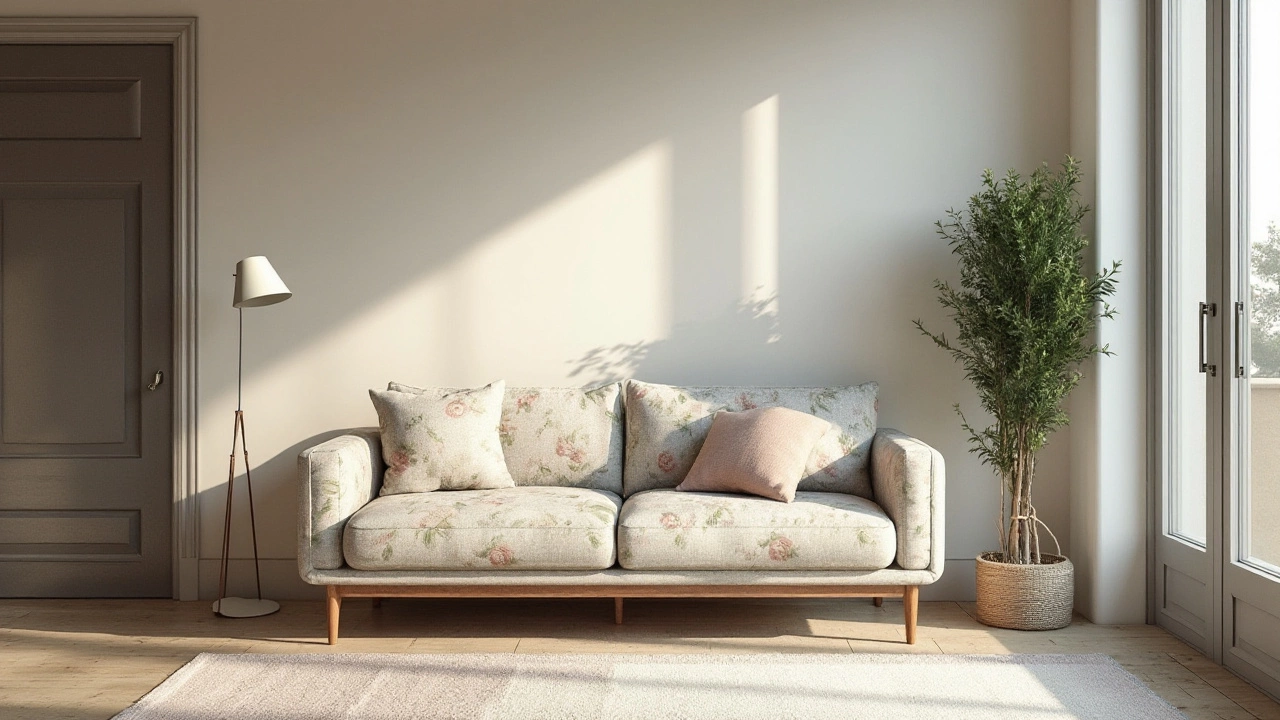
Light and Neutral Tones
Light and neutral tones are like the secret weapon for creating a sense of spaciousness in small rooms. These colors have a wonderful ability to reflect natural light, making the room appear larger and more airy. Think of colors like soft beige, gentle grays, crisp whites, and muted pastels. Each of these shades acts as a reliable backdrop that allows other elements in the room to shine without overwhelming the space.
Choosing such colors can also have a calming effect, something you might find particularly beneficial in a cozy setting. The visual continuity that these tones offer can seamlessly blend various elements in the room, from the walls to the floor, and even the furniture. This creates an uninterrupted flow, which, in turn, can help in making the space feel more open. It’s like weaving a soft, soothing narrative that invites relaxation and ease after a long day.
Not only do these colors help with space perception, but they also have a timeless quality. They are versatile, meaning you can easily change your room’s look by swapping accessories like pillows, rugs, and artwork, rather than investing in a new sofa. This flexibility makes neutral sofas a popular choice among homeowners and decorators alike for both temporary and permanent home settings.
"The ability of neutral shades to enlarge a room is almost magical, allowing homeowners to get creative with textures and patterns without overcrowding the space," reveals interior designer Sarah Richardson in an interview with Home & Design magazine.
Interestingly, studies have shown that light colors can influence our mood, often promoting positive emotions and a sense of peace. A calm-colored small room sofa could be just what you need to enhance productivity if you’re working from home, or to simply unwind with a book over a cup of tea. It's about creating a personal sanctuary within the confines of a smaller space, which is quite achievable with the right color strategy.
In some cases, homeowners opt for a mix of textures alongside neutral colors to add depth and interest. For example, a light gray linen sofa paired with a cream-hued cashmere throw can introduce layers that keep the eye engaged. The fun part is exploring these combinations to find what resonates best with your style while ensuring that the room remains spacious and inviting. When thinking about your living room furniture, consider how these tones can subtly enrich your environment, tying together various elements of your decor.
Daring with Bold Colors
In a small room, opting for bold colors on your small room sofa can inject a vivacious charm that lifts the spirits and sets a vibrant tone. Bold shades like deep emerald, rich crimson, or striking indigo can breathe life into compact spaces, challenging the traditional notion that light colors are the only option for smaller interiors. While it might seem counterintuitive, dark or saturated colors can make a statement that diverts attention from the room's limitations. These shades have the power to provide depth, adding a dramatic flair to otherwise understated areas.
Choosing to go bold doesn’t mean forfeiting harmony; it’s about balancing intensity with thoughtful design elements. Pairing your rich-colored sofa with lighter surroundings or neutral accessories can create striking contrasts that draw the eye. A richly hued couch amidst soft cream or pastel walls, for instance, not only stands out but also complements the room’s aesthetics. This juxtaposition can make your living room furniture feel like a cohesive piece of art, anchoring the room with sophistication. Interior design with bold colors encourages creativity, allowing you to craft a unique atmosphere where personal style dictates the decor.
Smart Pairing with Accessories
Accessorizing a bold sofa thoughtfully enhances its impact. Introducing elements such as patterned cushions, varied texture throws, or metallic accent pieces can elevate the room’s energy. A brightly colored sofa might pair beautifully with a neutral rug, effectively grounding the visual intensity. It's crucial to balance these choices to prevent the vibrant colors from overwhelming the small space. Small doses of additional colors, perhaps in the form of artwork or a side table, create a curated ensemble that feels intentional rather than chaotic.
"Color is a power which directly influences the soul," said Wassily Kandinsky, and this rings particularly true when experimenting with shades that command attention and admiration in your home.
When selecting a bold color for your sofa, consider the lighting in your living area. Natural light can soften vibrant hues during the day, while ambiance lighting in the evening highlights their richness. Strategically placing your sofa near a window can enhance the luminance of the fabric, playing with different tones as the light changes throughout the day. This dynamic use of light and color invites a continuous rediscovery of your space, imbuing it with a constantly shifting ambience that captivates.
Using Bold Colors to Define Zones
In an open-plan living area, a best sofa color in a bold hue can cleverly delineate spaces without the need for physical barriers. A striking color choice can distinctly mark the transition from the living area to the dining space or a reading nook. This not only maximizes the utility of your confined space but also creates a visual separation that feels purposeful. By defining these zones through color, you’re embedding function within design, ensuring that each section of your room speaks to its intended use.
It's essential to approach daring color choices with a sense of play. Remember, the aim isn’t just to impress but to create a sanctuary that reflects your personality and desires. Bold colors are an invitation to explore and embrace what speaks to your soul, transforming a small room into a narrative of personal expression. Therefore, let your imagination take the lead, allowing your bold color choice to become the creative canvas upon which your lifestyle is gracefully painted.
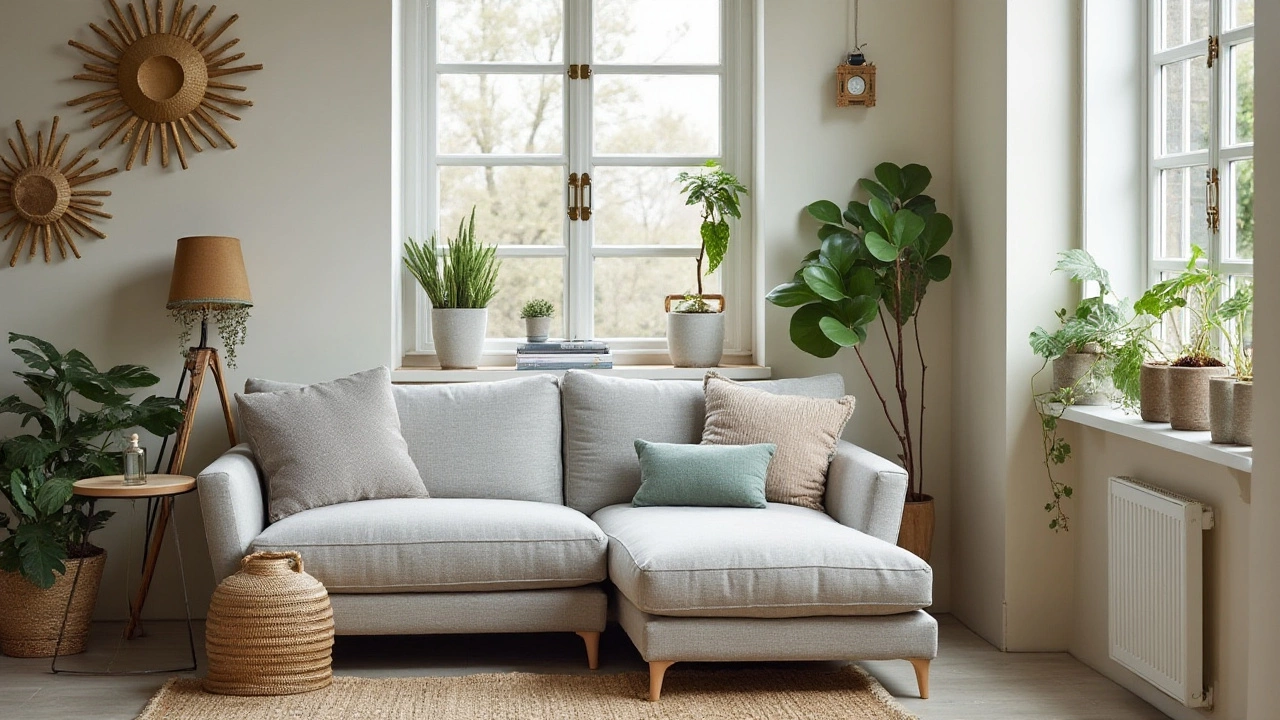
Patterns and Textures
When it comes to decorating a small room, patterns and textures can be your best friend or your worst enemy. A thoughtfully chosen pattern can add a sense of depth and interest, creating the illusion of more space in a compact area. On the other hand, busy or overly bold patterns might overwhelm the room, making it feel cramped and cluttered. The trick is in finding the right balance, which often involves a harmonized mix of subtlety and flair.
Patterns like stripes, whether horizontal or vertical, are renowned for their ability to alter perceptions of space. Horizontal stripes can give the illusion of width, stretching the eye's gaze across the room, while vertical stripes can make ceilings appear taller, adding height to the space. Those with an adventurous spirit might opt for a chevron pattern, which can inject a dynamic and modern vibe into the living area. Patterns don't always have to be visually striking; sometimes, a quiet, understated motif is all it takes to bring a touch of elegance and style.
Textures, on the other hand, play with light and shadow, adding dimension to a small room. A plush velvet may absorb light, lending a more intimate feel, whereas a lustrous silk or satin can reflect light, enhancing brightness and openness. Combining different textures effectively, such as pairing a smooth leather with a nubby wool weave, creates a visual and tactile interest while maintaining the room's coherent theme.
Certain guidelines can assist in navigating the world of patterns and textures. For instance, geometric designs can add a contemporary edge but are best suited to more modern settings, whereas floral prints might bring warmth and a touch of tradition. Layering textures and patterns sparingly can help to define different zones within the room without overwhelming the senses.
"Choosing textiles for a space is more than just a matter of aesthetics. It's about creating an environment where people can feel comfortable and inspired," says renowned interior designer Abigail Ahern.
In addition to fabric, consider incorporating patterns and textures through other elements like throw pillows or rugs. These accessories offer a low-commitment way to experiment with patterns and introduce seasonal updates. Remember, when it comes to living room furniture, consistency is key. Mixing patterns with various textures should enhance the room's overall unity while providing a seamless and inviting atmosphere.
Practical Tips for Color Maintenance
Keeping your small room sofa looking fresh and vibrant is a task that requires a little attention to color maintenance. The colors you choose can fade over time, especially if your sofa is positioned near a window where sunlight streams in daily. Upholstery fabric can be delicate, and colors can start to lose their luster with constant exposure to sunlight. To avoid this, consider using blinds or curtains that block UV rays, which can protect your furniture and keep those lovely hues intact. Alternatively, you can apply UV-protective spray specially designed for fabrics to offer another layer of protection.
Regular cleaning is crucial but how you clean depends on the fabric type. For instance, a microfiber couch might just need a quick vacuum and spot clean for minor stains, while leather sofas can benefit from regular dusting and wiping with a damp cloth. Weekly maintenance like this ensures any dirt or dust that could dull or stain the fabric is managed. Over time, sitting on the same spots can lead to wear marks. Flipping and rotating cushions not only helps maintain the sofa's shape but also ensures the best sofa color stays consistent throughout the years.
"For fabric preservation, it's often recommended to have a professional cleaning at least once a year," says interior design expert Jane Dixon. "This keeps the upholstery in top condition and revives colors that might have started to look tired."
Accidents happen, especially if you have kids or pets. Stain-resistant treatments can keep spills from becoming long-term guests on your sofa. These treatments form a barrier over the fabric, preventing liquids from seeping in immediately, giving you precious time to clean up. You can purchase spray-on protectants or opt for fabric that's already treated. Maintaining a clean sofa also enhances the overall appearance of your living room furniture, making it welcoming and attractive to guests.
Keeping your cat or dog away from your couch can be tricky, but it's important for color maintenance. Protective covers or throws are simple ways to shield your sofa from pet hair, dirt, and potential scratches. They also allow for a quick change in aesthetics if you feel like switching up your interior style. Also, regular grooming of pets can reduce the amount of fur left behind, meaning your fabric won’t be overwhelmed with the texture and the color won’t be hidden below layers of pet hair.
Finally, a little bit of refreshment for your sofa now and then can do wonders. Certain dyes can be revived using specific solutions available in the market, allowing the best sofa color to pop once more. If you feel adventurous, reupholstering is always an option. Though it might sound elaborate, it also provides an opportunity to perhaps try a new fabric that’s more aligned with the latest design trends, or simply a chance to express more of your personal style.

